
All categories
Featured selections
Trade Assurance
Buyer Central
Help Center
Get the app
Become a supplier

(334 products available)







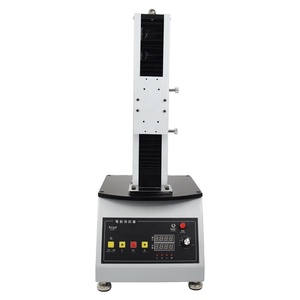
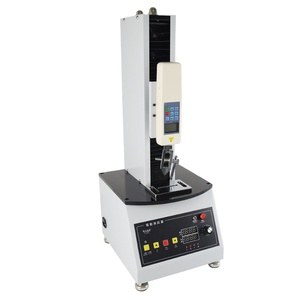
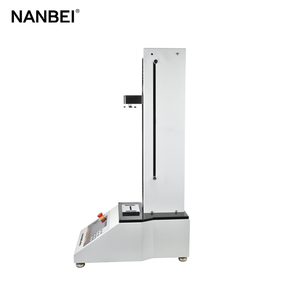
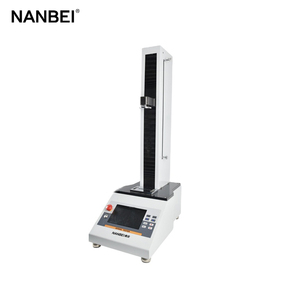

















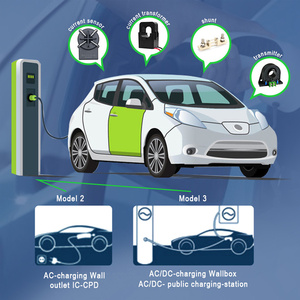









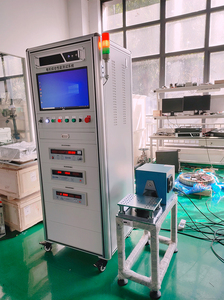







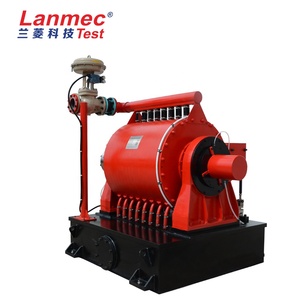




A dynamometer eddy current is a device used to measure torque and power of an engine or motor. There are several types of eddy current dynamometers:
Chassis dynamometer
This type of dynamometer measures the power and torque output of a vehicle's chassis. It consists of rollers on which the vehicle drives. As the vehicle accelerates and decelerates, its wheels interact with the rollers, simulating real-world driving conditions. The chassis dynamometer measures the forces required to move the vehicle in each driving situation, allowing engineers to analyze the vehicle's performance and emissions. Chassis dynamometers are essential for vehicle development, certification, and tuning.
Engine dynamometer
It measures the power and torque output of an engine. The engine is mounted on a test stand with a few eddy current dynamometer components. The dynamometer measures the torque output of the engine using a calibrated torque meter. The power output is calculated using the formula power equals torque times angular velocity. The engine dynamometer allows engineers to measure the engine's performance characteristics and emissions under various operating conditions.
Water brake dynamometer
A water brake dynamometer measures mechanical power by converting the energy into thermal energy and dissipating it through water. It consists of a water-filled chamber where the rotor spins, creating resistance. The power required to maintain a constant rotor speed is measured, allowing for precise power measurement.
Absorption dynamometer
It absorbs the power output of a device under test (DUT) to measure its performance. The absorbed power is displayed on an integrated or external power meter. The dynamometer can be mechanical, electrical, or hydraulic, depending on the specific design. Absorption dynamometers are widely used in laboratories and industrial settings for performance testing and calibration.
Torque converter dynamometer
It measures the performance of torque converters in vehicles. It simulates the operating conditions of a vehicle's powertrain and tests the torque converter's characteristics. The dynamometer provides valuable data on the torque converter's efficiency, slip, and stall speed, which is crucial for optimizing vehicle performance and fuel efficiency.
Rotating machinery dynamometer
It is designed to measure the performance of rotating machinery such as motors, generators, and turbines. It tests the power output, torque characteristics, and efficiency of the rotating machinery under various loading conditions. The data obtained from the tests help in the design, development, and maintenance of reliable and efficient rotating machinery.
The specifications of the eddy current dynamometer affect its performance and suitability for different applications. Here are some general specifications:
Torque Range
The torque range of an eddy current dynamometer is between 0.1 and 20000 Nm. The maximum torque that the dynamometer can measure is called the peak torque. On the other hand, the maximum amount of torque the dynamometer can continuously deliver without overheating or sustaining damage is the continuous torque.
Speed Range
The speed range of the eddy current dynamometer is between 0 and 10000 RPM. The measurement speed is the same as the resolution, which is the smallest change in speed that the dynamometer can detect. The measurement speed and resolution are important in applications that require precise speed control.
Power Rating
The power rating of the eddy current dynamometer is between 0.1 and 1000 kW. The power rating is the maximum power that the dynamometer can measure or absorb. The resolution is the smallest change in power that the dynamometer can detect. This feature is important for applications that require precise power measurement or control.
Accuracy
The accuracy of the eddy current dynamometer is about ±0.5% of the full-scale value. This means that the measured torque, speed, and power may have an error of 0.5% or less compared to the actual values. The accuracy is important in applications that require precise measurement and control.
Cooling System
The cooling system of the eddy current dynamometer is used to dissipate the heat generated by the friction and the electromagnetic losses. The cooling system can be air-cooled, water-cooled, or oil-cooled, depending on the dynamometer's size and application.
Construction
The construction of an eddy current dynamometer involves high-quality materials such as aluminum, steel, or cast iron. These materials are used to manufacture the frame, rotor, stator, and other components of the dynamometer.
The maintenance of the eddy current dynamometer is crucial to ensure its performance, accuracy, and reliability. Here are some maintenance tips:
Regular Inspection
Inspect the eddy current dynamometer and its components regularly for wear, damage, or corrosion. Check the rotor, stator, bearings, seals, and other parts for any signs of deterioration. Moreover, inspect the cooling system, electrical system, and control system for proper operation and performance.
Cleaning
Clean the eddy current dynamometer and its components regularly to prevent dust, dirt, and debris buildup. Use a soft cloth, a brush, and a mild detergent or a specialized dynamometer cleaner to remove the contaminants. Pay attention to the rotor, stator, bearings, and other moving parts, as dirt and debris can affect their performance and lifespan.
Lubrication
The bearings, seals, and other moving parts of the eddy current dynamometer require regular lubrication to reduce friction, wear, and noise. Use the recommended lubricant or oil for the specific components of the dynamometer, and follow the manufacturer's instructions for the lubrication intervals and amounts.
Calibration
Calibrate the eddy current dynamometer regularly to maintain its accuracy and reliability. Use a reference standard or a calibration service to check and adjust the torque, speed, and power measurements of the dynamometer. Follow the manufacturer's instructions and the relevant standards and regulations for the calibration procedures and intervals.
Repairs
Perform any necessary repairs or replacements promptly to minimize the downtime and the impact on the performance and accuracy of the eddy current dynamometer. Use only genuine spare parts and follow the manufacturer's instructions for the disassembly, assembly, and repair procedures.
Choosing the right dynamometer eddy current involves understanding specific requirements for a given project. Here are some pointers for choosing the right eddy current dynamometer:
Torque and Power Requirements:
Selecting an eddy current brake with the appropriate torque and power rating is essential. The chosen dynamometer should have a higher power rating than the maximum power output of the tested engine or motor.
Speed Range:
The eddy current dynamometer should have a speed range that matches the requirements of the project. The speed range must be suitable for low-speed torque measurement and high-speed testing.
Accuracy and Stability:
The eddy current dynamometer's accuracy and stability are vital to ensuring precise and repeatable measurements. Selecting a dynamometer with high accuracy and stability helps achieve reliable test results.
Installation and Maintenance:
Considering the installation and maintenance requirements of the eddy current dynamometer is essential. It is necessary to ensure that the chosen dynamometer can be installed and maintained in the available space and that the required accessories and tools for maintenance are available.
Data Acquisition and Control Systems:
The eddy current dynamometer must be equipped with suitable data acquisition and control systems to allow real-time monitoring and control of tests. The data acquisition and control system must be compatible with the requirements of the project and provide the necessary functions and interfaces.
Cost and Budget:
Considering the cost and budget of the eddy current dynamometer is essential. Selecting a dynamometer that meets the requirements of the project and is within the budget is necessary. At the same time, it is essential to make a cost-benefit analysis to evaluate the performance and reliability of the chosen dynamometer.
Here is a guide on how to DIY and replace an eddy current dynamometer:
Safety Precautions:
Before starting, ensure to disconnect the power supply to the dynamometer. Use appropriate personal protective equipment (PPE), such as safety glasses and gloves, and follow all safety protocols.
Identify the Issue:
Determine the reason for the replacement. Whether it's wear and tear, a malfunctioning component, or an upgrade. This will help in understanding the necessary steps to take.
Disassemble:
Start by loosening the bolts and screws that hold the dynamometer in place. Carefully remove any protective covers or enclosures. Keep track of all fasteners and components during disassembly.
Electrical Connections:
Take note of the electrical connections, including the wiring diagrams. Disconnect the electrical connections, ensuring to label them for easy reassembly.
Mechanical Connections:
Disconnect any mechanical connections, such as shafts or couplings, that link the dynamometer to the test system.
Remove the Old Dynamometer:
Once fully disassembled and disconnected, carefully remove the old dynamometer from its mounting location.
Install the New Dynamometer:
Position the new dynamometer in place, ensuring proper alignment with mechanical connections. Secure it with mounting bolts and screws.
Mechanical Connections:
Reconnect the mechanical connections, such as shafts or couplings, following the manufacturer's specifications.
Electrical Connections:
Reconnect the electrical connections according to the labeled diagrams. Ensure all connections are secure and properly insulated.
Assembly:
Reassemble any protective covers or enclosures and any other disassembled components.
Testing:
Perform a preliminary test to ensure everything functions correctly before fully assembling and operating the dynamometer system.
Final Check:
Once satisfied with the test results, perform a final check to ensure all components are in place and functioning as expected.
Q1: What is an eddy current dynamometer?
A1: An eddy current dynamometer is a measuring instrument used to measure torque and power, particularly in engine testing. It uses the principles of electromagnetic induction, particularly eddy currents, to create resistance or load that can be precisely controlled and measured.
Q2: What are the advantages of an eddy current dynamometer?
A2: Eddy current dynamometers offer several benefits, including their ability to provide consistent and precise control of the load, making them suitable for various applications. They also have a relatively simple and robust design, requiring minimal maintenance. Additionally, eddy current dynamometers can be used in different environmental conditions, including high temperatures and harsh environments.
Q3: What is the difference between a mechanical and an eddy current dynamometer?
A3: While mechanical dynamometers rely on physical components like gears and friction to measure power and torque, eddy current dynamometers use electromagnetic induction. This gives eddy current dynamometers the advantage of requiring less maintenance and providing more precise and consistent measurements.
Q4: Can eddy current dynamometers be used in renewable energy applications?
A4: Yes, eddy current dynamometers are suitable for various applications, including measuring and testing in renewable energy systems, such as wind turbine generators and other mechanical components.